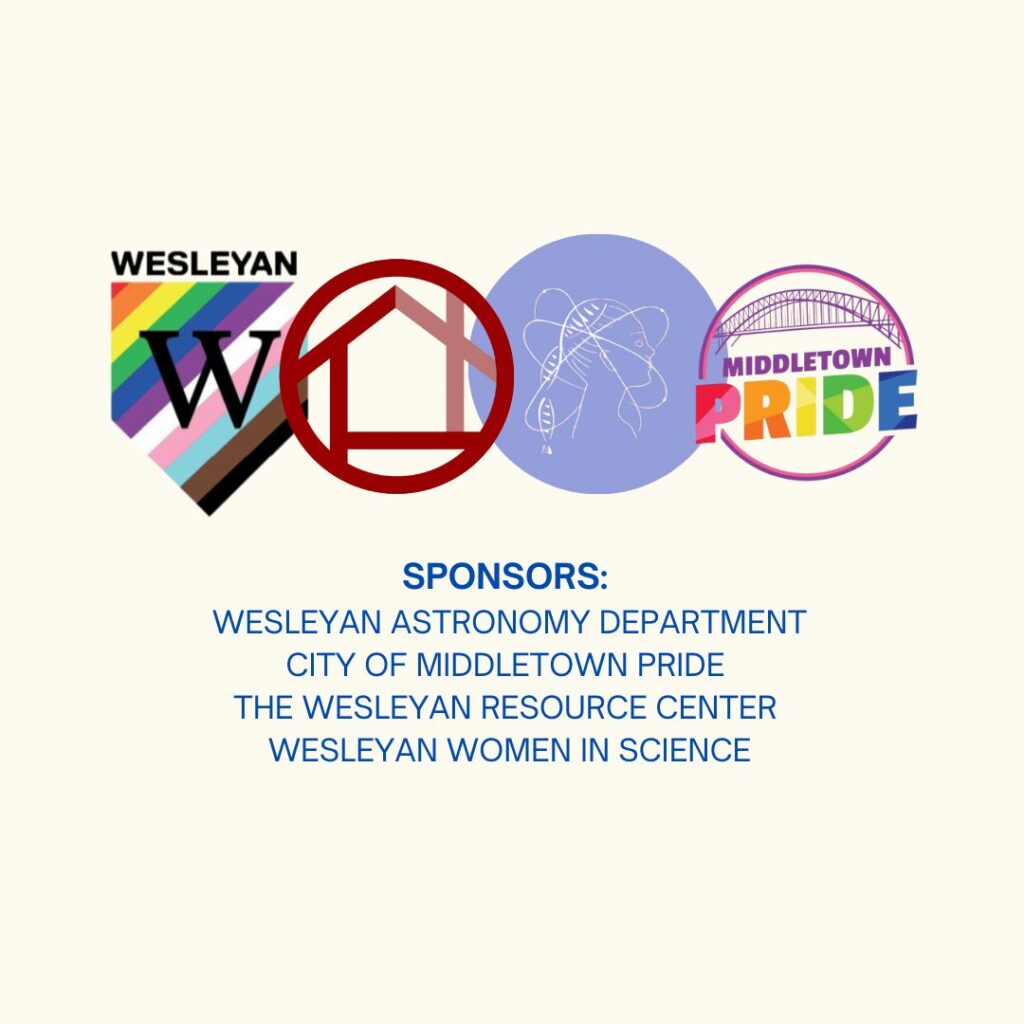The year was 1771, and Edmund Halley was on the verge of accomplishing what no one had done before: accurately calculating the distance between Earth and the sun. History books focus on the moment of his epiphany—the second the numbers all came together—but his discovery was decades in the making: astronomers had been working on this problem for centuries before he was born. His eureka moment was in part thanks to people who had wrestled with the numbers their whole lives, knowing they wouldn’t live to see the solution, but intent upon contributing at least one puzzle piece to the picture their great-great-grandchildren would get to experience.
I learned this story from Wesleyan alum Owen Gonzales at Wesleyan’s second annual “Star-GAY-zing” event on Friday, October 11. The event, a collaboration between the Wesleyan astronomy department and the city of Middletown’s LGBTQIA+ commission, opened Wesleyan’s Van Vleck observatory to faculty, students, and the wider Middletown community. Because Wesleyan celebrates Pride month in October, it was linked to a wider series of events highlighting the experiences of LGBTQIA+ community members at Wesleyan.
Gonzales was one of a few speakers who volunteered to give mini-talks about LGBT topics in astronomy, and I found it fitting that his presentation focused on science as a collective effort, because the room was filled with people who had come to science from a variety of backgrounds: at the table where I was sitting, I talked to Wesleyan professors, Middletown science enthusiasts, artists interested in sketching galaxies, Wesleyan students from physics and music majors alike, and children whose parents had brought them out to see the stars. Gonzales ended his presentation by telling a story about Henrietta Swan Leavitt, a woman astronomer who had been confined to solving rote mathematical equations for the “real astronomers”—that is, male astronomers—who led the research. Refusing to simply be a “human computer,” she doubled down on her calculations and eventually made a pivotal discovery which forever changed how we understand the scale of the universe. “This is exactly why we need as many perspectives as possible,” Gonzales said.
The event was an unique opportunity for engagement between Wesleyan and the wider Middletown community. While student groups have participated in Middletown mutual aid programs and other civic initiatives in the past, it is less common that Wesleyan’s wealth of academic and artistic resources is made available to those outside the institution. At the observatory, I chatted with a young couple who lifted their toddler up to the telescope so that the child could look at the surface of the moon. They reminded me of my parents, who made many magical childhood experiences for me out of free public events at the university near where I grew up. Those events—which strongly shaped the student I am today—were a glimpse into an exciting and human side of academia; they were particularly meaningful access points for me because academia is a space which can often feel alienating or hostile to students of color.
Amid midterm exams and an ever-increasing homework load, visiting the observatory reminded me that excitement is why I’m drawn to science in the first place. From the voice narrating queer Egyptian myths inside a planetarium dome to my economics major friend who eagerly showed me their clay planet (“I’m queer in STEM! Econ is a social science,” they said; I laughed and reminded them that the event was open to all majors), everyone I met was drawn in by curiosity, which is the starting point for every meaningful scientific endeavor. I hope future Wesleyan events will provide more opportunities for us to reconnect to that spirit together.



